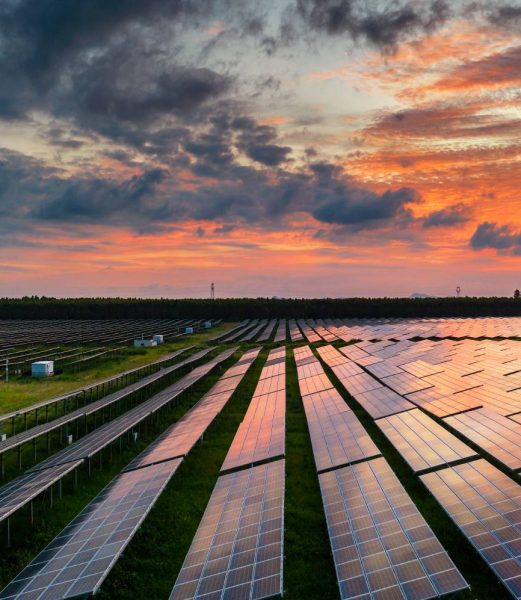
Climate risks threaten insurers' profitability and financial stability. See how insurers can adapt.

Climate risks threaten insurers' profitability and financial stability. See how insurers can adapt.

Five years ago, there was no conflict in Ukraine. People went into offices for work. No one was fighting over toilet paper. Everyone’s concept of AI was loosely anchored by Hollywood films like Terminator or War Games. And, insurers enjoyed relatively stable profits, consistent inflation/interest rates, and manageable change volume.

Thanks to the ubiquity of smartphones and laptops, people are used to getting what they need at the press of a button – whether they’re looking for information, seeking action or trying to solve a problem. Citizens want that same ease of access from their city’s government. As more citizens

International Women’s Day is an opportune moment to celebrate the achievements of women, specifically those combating climate change with technology. Among the inspiring stories is the women-led team of data scientists known as the StaSASticians, winners of the insurance track of the 2023 SAS Hackathon. No beginner’s luck, just accessible

The world’s a hot mess – literally. We're facing unprecedented weather patterns fueled by climate change, uncertainty stemming from financial volatility and worsening business results. All while carriers struggle to determine which AI solutions (among thousands) to choose. It’s enough to make you want to shut the doors and windows

The extreme temperatures that hit the UK in 2022 – the heatwaves of the summer followed by cold snaps in winter – were a reminder that the climate is becoming increasingly volatile. Globally, the weather conditions were even more challenging, with droughts, famines, wildfires, flooding, and hurricanes reported worldwide. All

Health care and life science organizations have always prioritized saving lives and now extend that commitment to environmental, social and governance (ESG) goals. They are not merely checking boxes, but genuinely pursuing long term impact for individuals, future generations and the planet. However, they must now elevate their ESG efforts to

A new report from the Intergovernmental Panel on Climate Change (IPCC) highlights the pressing need for prompt and resolute action across industries to tackle climate change. The report emphasizes the importance of prioritizing equity, social justice, inclusion and just transition processes to enable ambitious climate mitigation actions and climate-resilient development.

Where do hammerhead sharks go at night? And perhaps more importantly, why? That's what Research Scientist and Professor Alex Hearn of the Galapagos Science Center hoped that a team of SAS analytics volunteers would be able to answer by analyzing data he's collected over nearly two decades. The project is

Artificial Intelligence (AI) can drive environmental innovation (EI) in sustainability and reduction of carbon emissions. However, the use of AI itself also comes with environmental costs. The high computational requirements of AI-based systems lead to significant energy consumption, contributing to greenhouse gas emissions. The energy consumption of AI systems can

Analytics are vital to a safer future. As a renowned sustainability leader, SAS is committed to making a positive impact on our customers, employees, and the planet. Climate change is more important than ever, and the explosion of big data is essential to navigating this crisis. Learn how analytics is

A lot of companies publish corporate social responsibility (CSR) reports that describe their actions to contribute to the United Nations Sustainable Development Goals (SDGs). However, in the absence of standardized reporting rules, it is not always clear how much of these reports is genuine action, and how companies compare from

Movimientos y acuerdos internacionales, derivados de preocupaciones sobre el deterioro ambiental, social y el impacto del cambio climático, han buscado el compromiso de los países, las empresas y la sociedad para tomar mayor participación y modificar la inercia actual a fin de frenar y revertir, en lo posible, sus efectos

European agriculture is under enormous pressure to achieve the level of sustainability envisaged by EU initiatives such as the Green Deal and the Farm to Fork strategy. Meanwhile, the international crisis in Ukraine also reminds us that we need to make our food system more resilient to shocks. Data-driven policy

See how these 12 carbon terms are starting to define our future.

The topic of sustainability has always been on the agenda at SAS in one way or another. As we become more educated and aware across the globe, and more regulatory factors come into play, expectations and accountabilities are under scrutiny like never before. I caught up with Malinda Salter, Senior

Today’s investors are eager to understand the climate-related risks of their business investments, not just because they are becoming more climate-conscious but also because climate-related risk can bring financial risk. A newly proposed rule in the US aims to bring more transparency to those risks. In March, the US Securities

See how our customers are using analytics to cut carbon emissions while achieving other business goals.

From COVID-19 vaccines, climate change, supply chain issues and everything in between, 2021 set forth a wealth of thought-provoking ideas and data-related topics for us to share with you on this blog. Last year, SAS announced more groundbreaking partnerships and expanded upon its corporate responsibility efforts to help solve some

A recent report suggests that the current state of climate change is alarming. Climate change puts billions of people at risk of events like extreme hurricane seasons and rising sea levels. However, data and analytics play a critical role in informing us about the situation, planning ahead, and raising awareness

Earth’s natural capital deserves protection – for our sake and for the future. Analytics can help.

Analyzing climate change business risk helps companies choose the most effective actions.

“Ocean acidification is sometimes referred to as global warming's equally evil twin.” ~ Elizabeth Kolbert This is the second post in my two-part series about climate change. You can read part 1 of this series here. When engaging in data exploration for insights, it’s good practice to start with a

“The future is already here — it's just not very evenly distributed.” ~ William Gibson, author The same can be said for climate change – global warming is here, in a big way, but its effects are still an arm's length away for many of us. How is climate change

Analyzing tweets is challenging because of their succinctness (max 280 characters). However, that task is facilitated by the powerful features of SAS Visual Text Analytics (VTA), which includes embedded machine learning algorithms.

Many things in nature can be seen as chain reactions. When one action occurs, others follow suit. For example, atmospheric greenhouse gas levels are increasing, which leads to a warming of the oceans. As the oceans warm, weather and climate patterns across the globe are impacted because the amount of

Data and analytics touch our lives every day. Consider: A call from your bank warning of a suspicious transaction. A well-timed discounted offer for something you need. Most people realize that data and analytics are behind these things, but they remain on the periphery of mainstream conversations. We need to

Carbon Dioxide ... CO2. Humans breathe out 2.3 pounds of it per day. It's also produced when we burn organic materials & fossil fuels (such as coal, oil, and natural gas). Plants use it for photosynthesis, which in turn produces oxygen. It is also a greenhouse gas, which many claim

WRAL Chief Meteorologist (and Friend Of the Business Forecasting Deal) Greg Fishel garnered national attention recently with a thoughtful (yet to some, provocative) blog post on climate change. In the post, Fishel chronicled his evolving thought on the subject. He argued for an end to the political partisanship that stifles